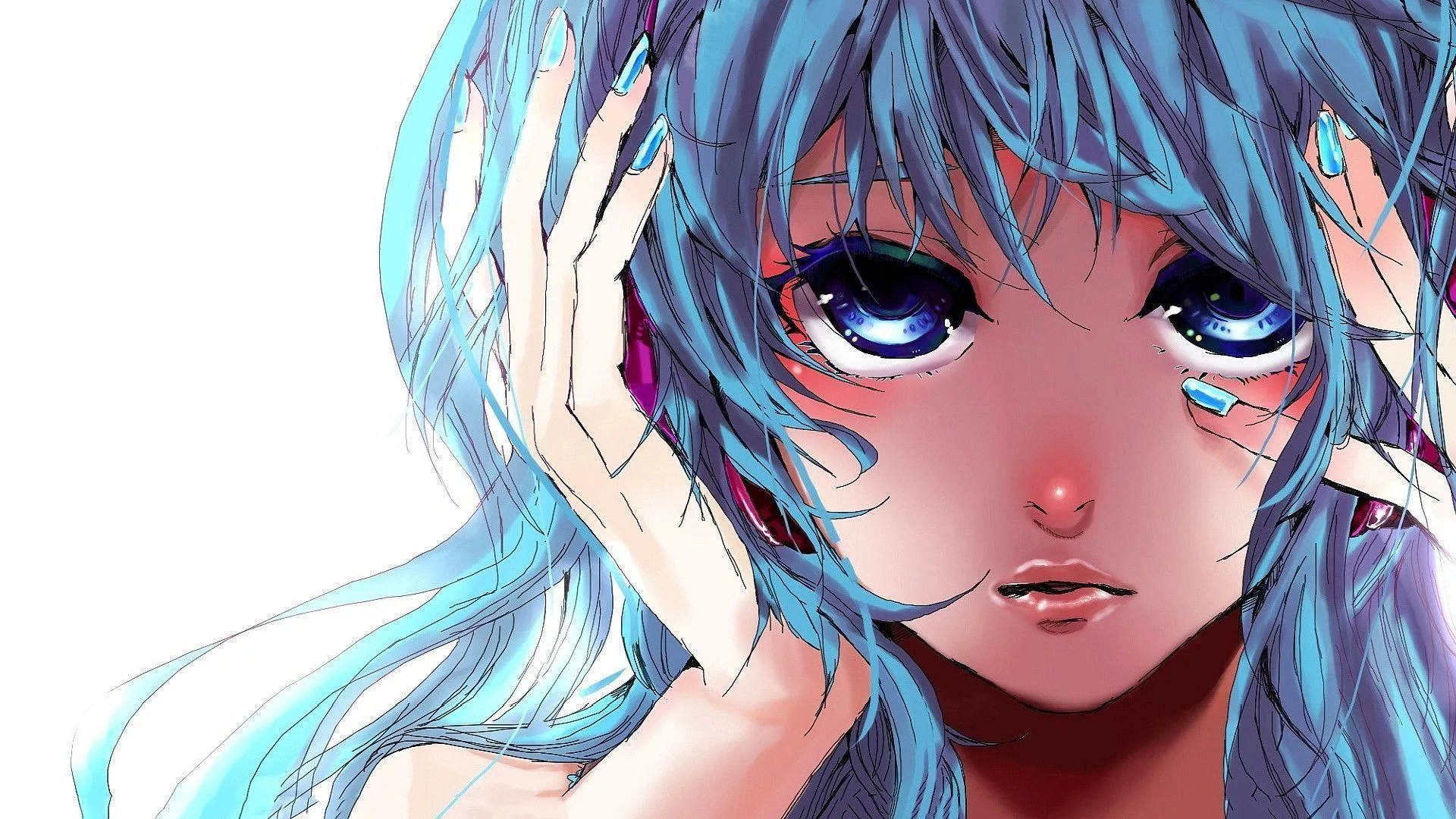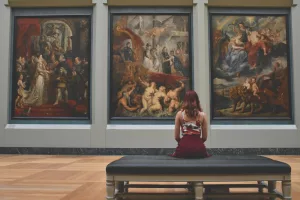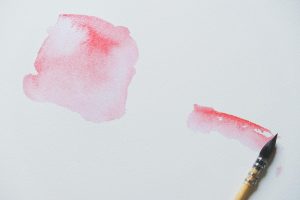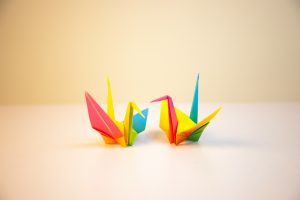Anime-inspired art has a global fanbase for a reason—it blends vivid visuals, captivating characters, and dynamic scenes into a style that resonates deeply with audiences. Whether you’re captivated by the large, expressive eyes of a shoujo protagonist, the intricate worlds of fantasy anime, or the intense action poses of shounen heroes, anime art offers something for everyone. But translating this unique aesthetic into your own art can seem daunting.
Creating anime-inspired art requires mastering the fundamentals of drawing while embracing the stylistic elements that make anime so distinctive. This expanded guide will break down the process step-by-step, providing detailed insights into the tools, techniques, and artistic principles necessary to bring your anime-inspired ideas to life.
Understanding the Basics of Anime Art
The Unique Characteristics of Anime
Anime art stands out as a unique and captivating style, defined by its ability to convey emotion, storytelling, and aesthetics in a way that transcends the boundaries of strict realism. Unlike other art forms that may prioritize lifelike details, anime thrives on exaggeration and symbolism, using its distinct features to evoke feelings and immerse viewers in its narrative. The artistic decisions in anime—from the character designs to the dynamic compositions—are deeply tied to its purpose of creating engaging and memorable visual storytelling.
One of the most iconic elements of anime art is the oversized, detailed eyes that often dominate the character’s face. These eyes are a storytelling device in themselves, used to communicate a wide range of emotions and amplify the character’s personality. They are intricately designed, featuring gradients, highlights, and unique shapes. For instance:
- Large, sparkling eyes with soft gradients and multiple highlights convey innocence, wonder, or vulnerability.
- Sharp, angular eyes suggest strength, intensity, or a calculating nature.
- Downturned or half-closed eyes can express sadness, weariness, or aloofness.
This flexibility allows anime artists to express complex emotions without relying heavily on dialogue, making the characters’ feelings instantly recognizable.
Another hallmark of anime is its simplified facial structure, which includes minimalistic depictions of features like the nose and mouth. These understated elements draw attention to the eyes and make facial expressions more adaptable to exaggeration. The simplicity also helps anime characters maintain a clean and polished aesthetic, even in fast-paced or highly detailed scenes. This approach to facial design supports a universal appeal, as the abstraction allows audiences from various cultural backgrounds to relate to the characters on an emotional level.
Beyond facial features, anime characters are brought to life through dynamic poses that emphasize motion and emotion. The body language in anime is rarely static; instead, it is designed to reflect the character’s energy, mood, or situation. For example:
- A character mid-leap with outstretched limbs conveys excitement or determination.
- A hunched posture with trembling hands suggests fear or despair.
- A casual pose with one hand on the hip and a tilted head can communicate confidence or playfulness.
These poses add a sense of drama and action, making the characters feel more alive and engaging.
The clothing, hair, and accessories in anime are equally stylized, serving as extensions of the characters’ personalities and the world they inhabit. Hair, for example, is often exaggerated in length, volume, or color, with unique styles that make characters instantly recognizable. Flowing hair is used to create a sense of movement, especially in action scenes, while spiky or gravity-defying hairstyles suggest individuality and energy.
Clothing design in anime frequently incorporates:
- Intricate patterns: Floral motifs, embroidery, or magical symbols.
- Bold lines and contrasts: Sharp cuts and bright colors to distinguish characters.
- Context-specific attire: A magical girl might wear an elaborate, brightly colored outfit with sparkling details, while a cyberpunk protagonist might don dark, streamlined attire with neon accents.
These elements not only enhance the character’s appearance but also reflect their role within the story.
Anime also distinguishes itself through its use of symbolism and abstraction. For example, visual elements such as glowing auras, speed lines, or exaggerated facial expressions are often used to amplify emotions or highlight important moments. A character blushing might be depicted with dramatic red streaks across their cheeks, or a moment of shock could be accompanied by a background filled with jagged lines or stark colors. These artistic choices prioritize storytelling and emotional impact over realism, making anime both visually engaging and thematically rich.
In sum, the unique characteristics of anime art lie in its balance of simplicity and detail, emotion and motion, and individuality and symbolism. By focusing on features that amplify expression and narrative, anime creates a style that is instantly recognizable, emotionally resonant, and endlessly versatile. This distinct approach to art has made anime a global phenomenon, inspiring countless artists to explore its techniques and push the boundaries of creativity.
Types of Anime Styles
Anime is a diverse genre that encompasses a wide range of artistic styles, each tailored to its unique themes, audiences, and storytelling goals. It’s not a singular art form but a collection of sub-styles, each with distinct characteristics and creative approaches. Understanding these styles can help you identify what resonates with you as an artist and guide your artistic choices. Below, we delve into some of the most prominent anime styles and their defining features.
Shoujo (Romance and Slice-of-Life)

Shoujo anime, targeted primarily at young female audiences, is characterized by its delicate and romantic aesthetic. This style emphasizes emotional storytelling, focusing on relationships, personal growth, and everyday life with a touch of fantasy or idealism.
- Color Palette: Shoujo art often uses soft, pastel colors and gentle gradients, creating an ethereal and dreamlike atmosphere. These colors contribute to the emotional tone, evoking feelings of warmth, nostalgia, or tenderness.
- Character Design: Characters in shoujo anime typically have slender builds, elongated limbs, and exaggerated facial features such as large, sparkling eyes that convey innocence and vulnerability. Hair is often detailed and flowing, with intricate patterns or accessories.
- Visual Elements: Shoujo anime frequently incorporates floral motifs, sparkles, and glowing light effects to enhance the romantic or sentimental mood. Backgrounds may be less detailed but beautifully rendered to emphasize the characters.
Examples of shoujo anime include Sailor Moon, Fruits Basket, and Ouran High School Host Club. As an artist, you can explore this style by experimenting with soft, flowing lines, expressive eyes, and a light color palette.
Shounen (Action and Adventure)

Shounen anime, aimed at young male audiences, is synonymous with high-energy action, intense battles, and themes of friendship, perseverance, and personal growth. The art style reflects the genre’s dynamic and exciting tone.
- Bold Lines and Exaggerated Features: Shounen art uses strong, thick lines to define characters and emphasize their physicality. Exaggerated expressions, such as wide-open mouths or intense eyes, heighten the drama and emotion of action scenes.
- Dynamic Poses: Characters are often drawn mid-action, with exaggerated movement and perspective to create a sense of speed and power. These poses are central to the genre’s appeal, making characters feel larger than life.
- Color and Effects: Shounen anime features vibrant, high-contrast colors, often paired with dramatic lighting effects, speed lines, and explosive backgrounds. These elements add intensity and excitement to each frame.
Popular shounen anime includes Dragon Ball Z, Naruto, and Attack on Titan. If you’re exploring this style, focus on mastering anatomy, dramatic poses, and high-energy compositions.
Seinen (Mature Themes)

Seinen anime targets adult audiences, often exploring complex themes, darker tones, and nuanced characters. The art style reflects these mature narratives with more realistic proportions, subdued colors, and attention to detail.
- Realistic Design: Characters in seinen anime are often drawn with proportions closer to real life, avoiding the exaggerated features common in other styles. Facial expressions tend to be subtle, conveying emotion through small details rather than over-the-top gestures.
- Color and Lighting: The color palette is generally more muted, with earthy tones and shadow-heavy lighting to create a grounded, serious atmosphere.
- Detailed Backgrounds: Seinen anime often features intricately detailed backgrounds, adding to the realism and immersing viewers in the story’s world. Settings may include urban landscapes, historical environments, or dystopian worlds.
Notable seinen anime includes Berserk, Psycho-Pass, and Monster. Artists looking to explore this style should practice realism, detailed environments, and subtle expressions to evoke depth and complexity.
Fantasy and Sci-Fi

Fantasy and sci-fi anime styles are some of the most visually imaginative, featuring fantastical worlds, futuristic technology, and otherworldly creatures. These genres prioritize intricate designs and vibrant visuals to immerse viewers in their unique settings.
- Character and Creature Design: Fantasy and sci-fi characters often wear elaborate costumes with detailed armor, robes, or futuristic attire. Non-human characters, such as elves, robots, or aliens, may feature exaggerated anatomy, glowing features, or mechanical enhancements.
- World-Building: The backgrounds and settings are as much a part of the story as the characters. From sprawling, magical kingdoms to high-tech dystopias, these environments are intricately crafted and highly detailed.
- Special Effects: Magic spells, glowing runes, and high-tech holograms are common visual elements that add flair to these styles. Light, color gradients, and particle effects enhance the fantastical nature of the scenes.
Anime like Sword Art Online, Made in Abyss, and Neon Genesis Evangelion exemplify this style. For artists, exploring fantasy and sci-fi involves experimenting with intricate details, imaginative designs, and bold special effects.
Tools and Materials
Traditional Media
Traditional anime art requires high-quality tools for clean lines and vibrant colors.
- Sketching Tools: Use HB or 2B pencils for light outlines. Erasers, especially kneaded ones, allow for precise corrections.
- Inking Tools: Fine-tip pens or brush pens (like Micron or Sakura) provide the crisp outlines essential for anime art.
- Coloring Materials: Alcohol-based markers, such as Copic markers, are popular for their smooth blending and vivid hues. Colored pencils and watercolors are excellent for adding texture and depth.
- Paper: Choose smooth bristol or marker paper to prevent bleeding and ensure clean application of ink and colors.
Digital Tools
Digital tools open a world of possibilities for anime art:
- Drawing Tablets: Options like Wacom or iPads with Apple Pencils allow precise control.
- Art Software: Clip Studio Paint is a favorite among anime artists, offering tools for inking, coloring, and special effects. Other popular programs include Adobe Photoshop, Procreate, and Krita.
- Brush Presets: Many programs offer customizable brushes for inking, shading, and texturing, making it easier to achieve anime-style effects.
Digital tools also allow for layering, making it easy to experiment with compositions, effects, and color schemes.
Step-by-Step Guide to Creating Anime-Inspired Art
1. Concept and Inspiration
Every great piece of art starts with a solid concept. Ask yourself:
- Who is your character, and what’s their backstory?
- What emotion or story are you trying to convey?
- What setting or background complements your idea?
Gather references to inspire your work. This could include screenshots from anime, manga panels, or real-world photos. A mood board can help you stay consistent with your theme and style. For example, if you’re designing a fantasy character, you might include references for armor, magical elements, or mythical creatures.
2. Sketch the Framework
The foundation of anime-inspired art begins with a rough sketch. Start with basic shapes to establish proportions and pose. The head is often drawn larger than the body to emphasize the character’s personality, and the eyes are placed lower on the face for a youthful appearance.
Use light, loose strokes to block out the character’s pose. Dynamic poses often rely on curved lines to create a sense of movement. For static or emotional scenes, consider subtle tilts or gestures that convey the desired mood. Focus on anatomy, even if you plan to stylize heavily—understanding the basics of proportion makes stylized choices more effective.
3. Refine the Sketch
Refining the sketch involves adding details to your character.
- Facial Features: Start with the eyes, as they’re the focal point. Add highlights and gradients to create depth and emotion. Simplify the nose and mouth to keep attention on the eyes.
- Hair: Anime hair flows in distinct clumps rather than individual strands. Consider how the hair interacts with motion or wind in the scene.
- Clothing: Pay attention to folds and creases, as they add realism. Accessories, patterns, and textures bring life to your character’s outfit.
Erase unnecessary guidelines and clean up your drawing for a polished look.
4. Inking
Inking defines the lines of your artwork, giving it the clean and bold look associated with anime. Use varying line weights to create depth—thicker lines for the character’s outline and thinner lines for facial details and accessories.
Digital artists can take advantage of pressure-sensitive brushes for smooth, tapered strokes. This adds dimension to your lines and makes the artwork visually dynamic. Be meticulous during inking, as clean lines are crucial for the polished anime aesthetic.
5. Add Colors
Anime-inspired art relies on vibrant and purposeful color palettes:
- Base Colors: Fill in flat colors for the skin, hair, eyes, and clothing. Choose shades that complement the mood and tone of your artwork.
- Shading: Use cell shading for a classic anime look. Identify the light source and add sharp-edged shadows to areas opposite the light. Gradients or soft blending can enhance depth in hair and clothing.
- Highlights: Add bright highlights to hair, eyes, and reflective surfaces to create a polished and dynamic effect.
Experiment with color harmony to ensure your palette is cohesive and visually appealing.
6. Create a Background
While some anime art focuses solely on the character, adding a background can elevate your work.
- Simple Patterns: Gradients, sparkles, or abstract designs work well for portraits or close-ups.
- Detailed Environments: Use perspective to create realistic cityscapes, natural landscapes, or fantasy worlds.
- Special Effects: Add glowing lights, motion blur, or magical elements to enhance the atmosphere.
Think about how the background interacts with the character—this creates a unified and immersive composition.
7. Final Touches
Final adjustments can take your artwork from good to great:
- Contrast and Saturation: Fine-tune colors to ensure vibrancy and balance.
- Textures: Add subtle textures for clothing, skin, or backgrounds to enhance realism.
- Effects: Glow, sparkles, or soft-focus effects can add an ethereal quality to your piece.
Review your work and make any necessary tweaks to align with your vision.
Tips for Improving Your Anime Art
- Study References: Observe anime, manga, or professional artwork to understand anatomy, expressions, and composition.
- Practice Regularly: Dedicate time to drawing every day, focusing on specific aspects like hands, eyes, or poses.
- Experiment with Styles: Blend elements from different anime styles to develop your unique voice.
- Seek Feedback: Join art communities online or in person to share your work and gain constructive criticism.
Conclusion
Creating anime-inspired art is an exciting journey that combines technical skill, creativity, and storytelling. By mastering foundational techniques, embracing stylized elements, and experimenting with your own ideas, you can bring compelling characters and scenes to life. Whether you’re recreating a favorite anime moment or designing an original character, the process allows for endless expression and growth.
So gather your tools, let your imagination run wild, and begin your adventure in the world of anime art. With patience and practice, you’ll develop a style that’s uniquely yours, leaving a lasting impression on anyone who views your work.




